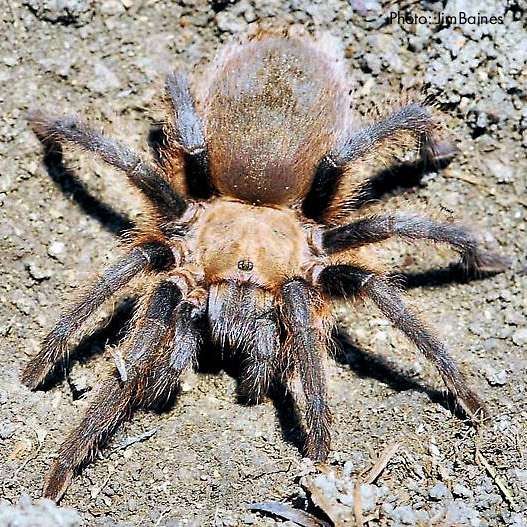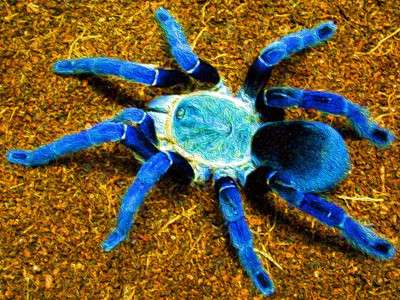
One of the most prevalent species of tarantula now residing in the Southern United States is the Texas brown tarantula, often referred to as the Oklahoma brown tarantula or the Missouri tarantula (Aphonopelma hentzi). Texas brown tarantulas can reach adult sizes with limb lengths exceeding 10 cm (4 in) and weights exceeding 85 g (3 oz). Their bodies are dark brown, though individual tarantulas’ colors may differ. As with many arthropods, the colors are more prominent following a molt.
Geographical Distribution
A. hentzi is found throughout the United States, specifically in Colorado, Missouri, Kansas, New Mexico, Arkansas, Texas, Oklahoma, and Louisiana. Along the borders of New Mexico and Texas, the species has also been found in northern Mexico.
Habitat
A. hentzi is a terrestrial species that frequently inhabits meadows, burrows underground, or makes its home and feeding grounds out of logs, stones, or the abandoned dens of other tiny animals. In order to detect approaching prey, Texas brown tarantulas line the entrance to their shelters with webbing.
Physical Appearance
- The Texas brown tarantula is the largest spider in Missouri and is a stocky, hairy species.
- With reddish hairs on the carapace, the body and legs are uniformly a dark chocolate brown color.
- Although there are more than 50 different species of tarantulas in North America, only this one is thought to be indigenous to Missouri.

Size
Males average around 112 inches in length, while females average 2 inches (excluding the legs).
Diet
Small invertebrates make up the majority of the Texas brown tarantula’s diet, just like other spiders. They will take pet crickets, grasshoppers, cockroaches and other live prey that is of a sufficient size in captivity.
Defense Mechanism
The species A. hentzi is relatively passive and nonaggressive. A. hentzi, like the majority of other tarantulas, assumes a stance on its hind legs and raises its front legs in a threatening way when startled. A. hentzi and the majority of other tarantulas found in the Americas also have small, coarse, brown or black urticating’s hairs on their abdomens, which they kick in the direction of any potential threats. In regions where the two species coexist, it is the main species preyed upon by the tarantula hawk, Pepsis grossa.
Like all New World tarantulas, the Texas brown tarantula rarely causes substantial harm to people through bites, unless an allergic reaction occurs. The puncture hole from a bite can also be unpleasant and cause subsequent infection if improperly treated due to the size of their teeth.
Lifecycle
An A. hentzi female can produce up to 1,000 eggs. Her burrow, where the eggs are safely nestled in a web resembling a hammock, is where she keeps watch over them. In 45 to 60 days, eggs will hatch. After emerging from the egg sac, spiderlings frequently remain with the female for a few days before separating to dig their own burrows.
It has been reported that females can live up to 40 years. There have not been any studies that have lasted this long, so they might last longer. Males rarely survive past a year after reaching sexual maturity.
Keeping as Pet
Tank
The tank doesn’t have to be huge; 10 gallons will do. Since this species prefers to dig, the tank should be prepared with several inches of a safe substrate, such as chemical-free potting soil. Keep no more than one tarantula in a tank at a time because they are not friendly. A small dish for water and a hygrometer, which measures humidity, are also required. A sizable piece of bark would provide a great hiding spot for the tarantula.
Maintenance
The water needs to be changed every day, along with any dead insects and other detritus. When necessary, mist the tank with dechlorinated water to keep the relative humidity between 50 and 60 percent. Although tarantulas don’t make a lot of mess, the tank needs to be thoroughly cleaned once or twice a year. Put the substrate in the trash after moving your tarantula to a holding container. Rinse the tank well after cleaning it out with dishwashing liquid and water. Replace the equipment, water dish, and tarantula after drying the tank and adding fresh substrate.
Table





